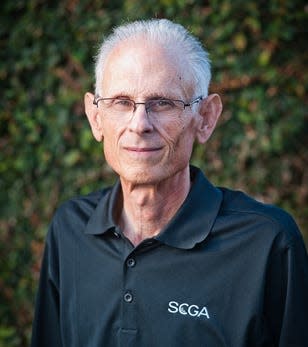Coachella Valley's golf community has done the math on the water it needs
The atmospheric rivers that began pummeling California right after Christmas have produced more than enough snow in the Sierra Nevada and rain everywhere else to provide relief to those parts of the state dependent upon mother nature and the State Water Project for the bulk of their water needs — not permanent relief, but a timeout to regroup after the three driest years on record.
One good year can and will restore a great deal of lost reserve capacity in the 1,500 holding tanks (reservoirs) that California constructed in the first 70 years of the 20th century to provide that portion of Southern California’s imported needs supplied by the State Water Project. However, one good year in California cannot and will not do much to raise the levels of those two mega-reservoirs known as Lake Mead and Lake Powell that supply water from the Colorado Basin.
The water levels in both, which are at roughly 25% of capacity, barely above “dead pool” in terms of their ability to generate electricity, won’t rise much based on this one wet winter. And given that those levels were at 50% in 2014, when the state stared down its last spike in the current 20-year megadrought, it doesn’t take a genius to figure out why the federal government has given the seven states that form the Colorado Compact until the end of January to come to an agreement on ceding 2 million to 4 million-acre-feet of allocation on a permanent basis. Today’s hotter, drier conditions that have given rise to the worst drought in the basin in 1,200 years aren’t receding anytime soon.
This is why the Coachella Valley golf community corralled more than 160 of its leaders into a room at Mission Hills Country Club on Jan. 11 to hear from Coachella Valley Water District Director Peter Nelson and CVWD Assistant General Manager Robert Cheng about the facts of these matters and what they portend for a golf community that has long benefited from a generous Colorado River allocation in addition to sitting atop one of the deepest and richest aquifers in the world. The two are related in ways that many outside the golf community may not understand.
The cornerstone of the very long-term Coachella Valley Water Management Plan for golf is the weaning of the golf community off pumping in favor of using raw Colorado River water to displace it — for the laudable purpose of keeping that rich aquifer in a state of replenishment. Fifty-four courses are already doing so; 44 more are slated to be hooked up. Given the direct connection between raw water draws off the Colorado River and the 120 golf courses in the region, the coming allocation reduction will necessarily require corresponding reductions from the Coachella Valley golf community.
Golf can do the math and oh so much more. We have been working with local water districts for years to wean ourselves off groundwater, convert to recycled water and reduce overall water consumption. Ramping those efforts up to meet the higher bar created by the hallowing out of the Colorado Basin won’t be much of a stretch.
Molly Duvall is the executive director of the Hi-Lo Chapter Golf Course Superintendents Association of America (GCSAA). Craig Kessler is the Southern California Golf Association (SCGA) Director of Public Affairs/Coachella Valley Golf & Water Task Force. Their emails are molly@duvallmanagement.com and CKessler@scga.org.


This article originally appeared on Palm Springs Desert Sun: Coachella Valley's golf community works to address water problems

